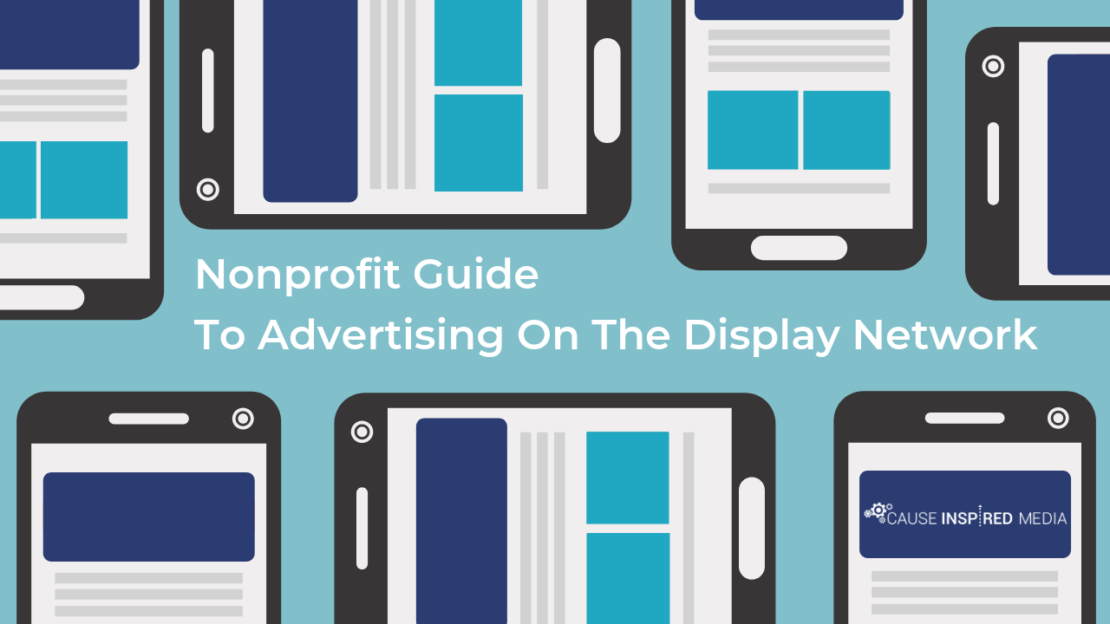Nonprofit Guide To Advertising On The Display Network
If the Google Search Network is not giving you the results you desire, you may want to think about going in a visual direction. The Google Display Network covers more than 90% of websites across the internet, expanding your reach and increasing your brand exposure. Google Display Ads place your brand in front of your target audience to create demand, rather than answer demand, like Google Search Ads.
What Are Google Display Ads?
Google Display advertising involves using images or .gifs to reach your target audience in a very unique, highly targeted way. Display ads are essentially imaged-based ads that live on several internet properties throughout the web. Google’s Display Network allows these ads to appear on over 2 million websites on over 650,000 apps so that your organization can reach the right people at the right time. By targeting websites that your audience is already visiting, you can help create a continuous conversation with these individuals, making them more likely to contribute to your cause. For example, if you want to target someone that might be interested in registering their child for an outdoor summer camp, you can use the display network to target parents on parenting blogs that focus on the outdoors. Those in-market parents are more likely to see your ad on the display network, and then click to learn more about the camp, or register their child.
There are two different types of Google Display ads: Responsive and Image. Responsive Display ads take an image and adapt its size and layout to fit into all possible spaces on a website. These ads support up to 10 different images with 5 different possible headlines and 5 different possible descriptions. On the other hand, Image Display ads require you to create images or .gifs that fit each specified size requirement on your own. These can only fit onto limited, designated website spots based on their size. With this type of Display ad, you will need around 22 total variations of each image if you want your ad to have the chance to show on all areas of a website.
Targeting On The Display Network
Audiences
One targeting option is to create an ‘audience.’ Audiences focus on the type of user you want to click on your ad. Audiences have 2 subcategories: Affinity and In-market. Affinity Audiences describe what users are interested in, or what their habits might be. An organization that teaches healthy cooking habits, for example, may target people who frequently visit cooking blogs. An In-Market Audience, however, targets what the user is actively researching or planning. An organization that sells fair-trade shoes, for example, may use in-market audiences to target someone currently browsing for shoes online.
Display Targeting
Advertisers can target webpages, apps, YouTube videos, and YouTube channels based on the content topic. An organization promoting cruelty-free makeup may target Makeup Artist influencers’ YouTube channels or videos showing users DIY makeup tips. If you know the specific websites or apps that you want your ad to appear on, then you can add these specific placements. Advertisers can also target keywords found on websites and demographics, like the age, gender, and income level, or parental status of a user.
Remarketing
If you have ever shopped online without making a purchase, you’ve probably seen a remarketing ad. Just hours after leaving an online shoe store, you might start seeing the same shoes you were browsing appear in ads. By looking at a page (like the shoes) without taking action (like purchasing the shoes), advertisers have automatically added you to a remarketing list.
Remarketing, also known as retargeting, is designed to recapture the attention of people who have previously interacted with your website without completing the desired action indicated on the landing page. This is intended to remind users who have previously interacted with your website to return to complete the conversion. Remarketing can increase your conversions and ROI while keeping your brand at the front of users mind.















